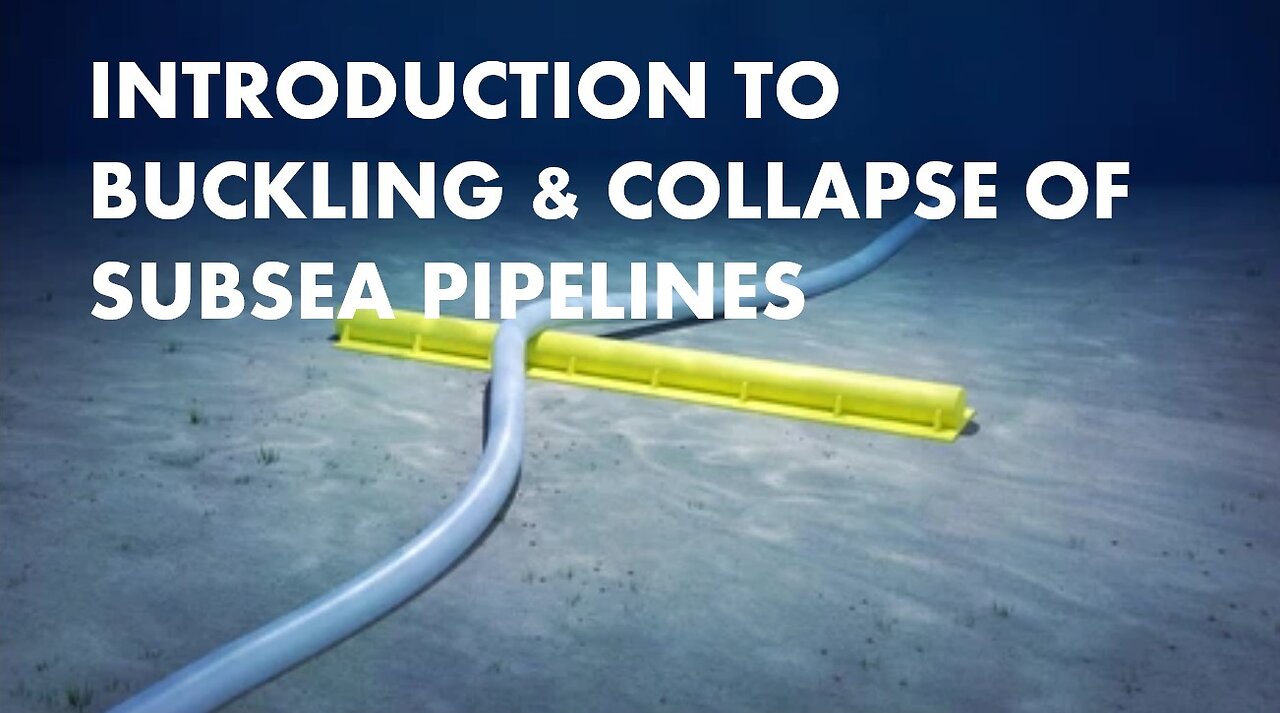Premium Only Content

Introduction to Buckling and Collapse of Subsea Pipelines
Pipelines constitute a vital means of transporting and distributing liquids and gases such as oil, gas, and water over long distance. Since the early 1970s of the last century, pipelines have become one of the main means of transporting offshore oil and gas in many parts of the world. In-service hydrocarbons must be transported at high pressure/high temperature (HP/HT) to ease the flow and prevent solidification of the wax fraction. The difference between the high-pressure/high-temperature (HP/HT) and the as-laid conditions would cause pipelines to expand. The axial expansion, however, is restrained either by soil friction, rocks, or anchors, thus inducing significant compressive axial loads in the pipeline wall. When the axial force reaches the lowest global buckling capacity, the pipeline will buckle globally, and the effective axial force will drop. If the pressure or temperature is further increased, the post-buckling will happen.
What is pipeline buckling?
Global buckling of a pipeline means the loss of stability of the pipeline similar as a bar in compression. The global buckling may appear either horizontally (lateral buckling on the seabed) or vertically (upheaval buckling of buried pipelines) (DNVGL-RP-F110 2017).
For full videos you can visit this link :
https://drive.google.com/file/d/1FB542Svm1K0k_0FFETysC06zvNKvVNpJ/view?usp=sharing
and you will be directed to a google drive link where you can download all files of this course
https://drive.google.com/file/d/12Fh1GelQtY0-8h0y0i3Uh2wsZZvCj05v/view?usp=drive_link
-
 LIVE
LIVE
Dr Disrespect
8 hours ago🔴LIVE - DR DISRESPECT - PUBG - 5 CHICKEN DINNERS CHALLENGE!
2,260 watching -
 57:56
57:56
Candace Show Podcast
7 hours agoHarvey Speaks: The Project Runway Production | Ep 1
81.8K42 -
 LIVE
LIVE
LFA TV
1 day agoEurope’s Relationship With America Is Over | TRUMPET DAILY 3.3.25 7PM
436 watching -
 LIVE
LIVE
Quite Frankly
5 hours ago"European Deth Pact, Blackout Data Breach, More" ft. Jason Bermas 3/3/25
1,119 watching -
 LIVE
LIVE
2 MIKES LIVE
2 hours ago2 MIKES LIVE #187 Deep Dive Monday!
124 watching -
 44:25
44:25
CatfishedOnline
3 hours ago $0.69 earnedRacist Lady Shocked After Sending Money to a Nigeria Romance Scammer
15.5K3 -
 56:45
56:45
VSiNLive
3 hours agoFollow the Money with Mitch Moss & Pauly Howard | Hour 1
41K -
 2:28:18
2:28:18
Nerdrotic
6 hours ago $5.01 earnedOscars Aftermath | Super Chat Square Up - Nerdrotic Nooner 469
54.6K13 -
 1:09:41
1:09:41
Sean Unpaved
7 hours ago $4.62 earnedUnpaved
60.4K4 -
 2:01:02
2:01:02
Revenge of the Cis
6 hours agoEpisode 1455: Cover Up
42K3